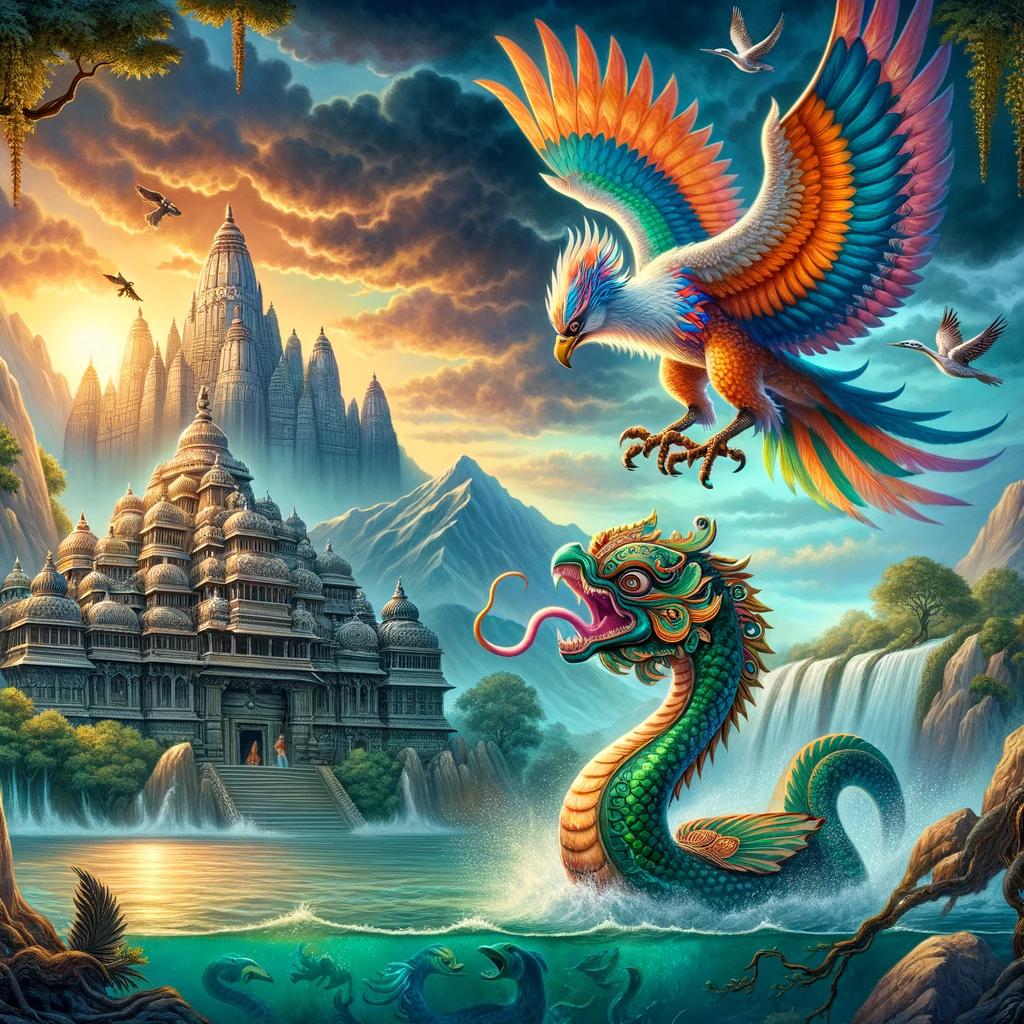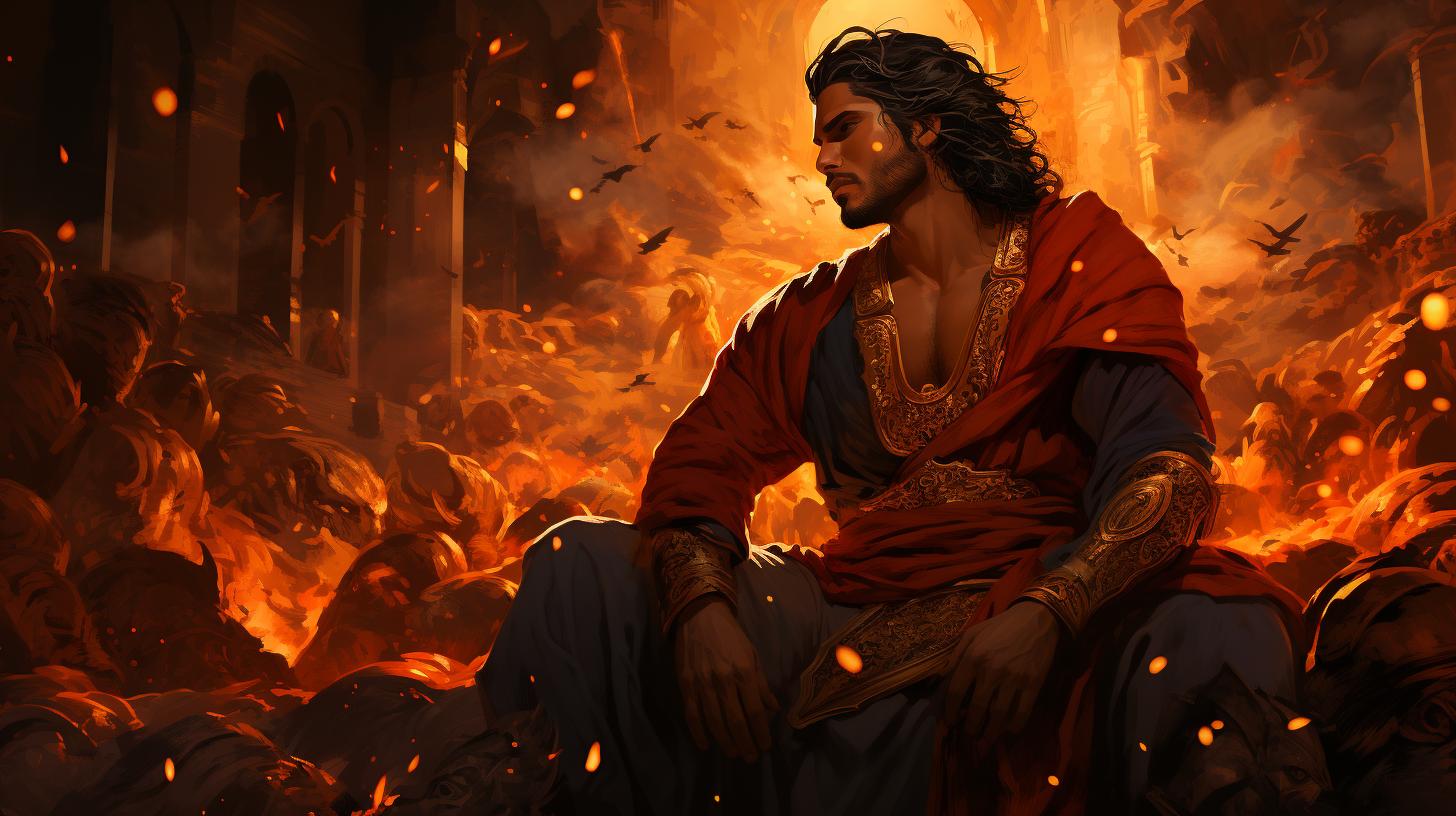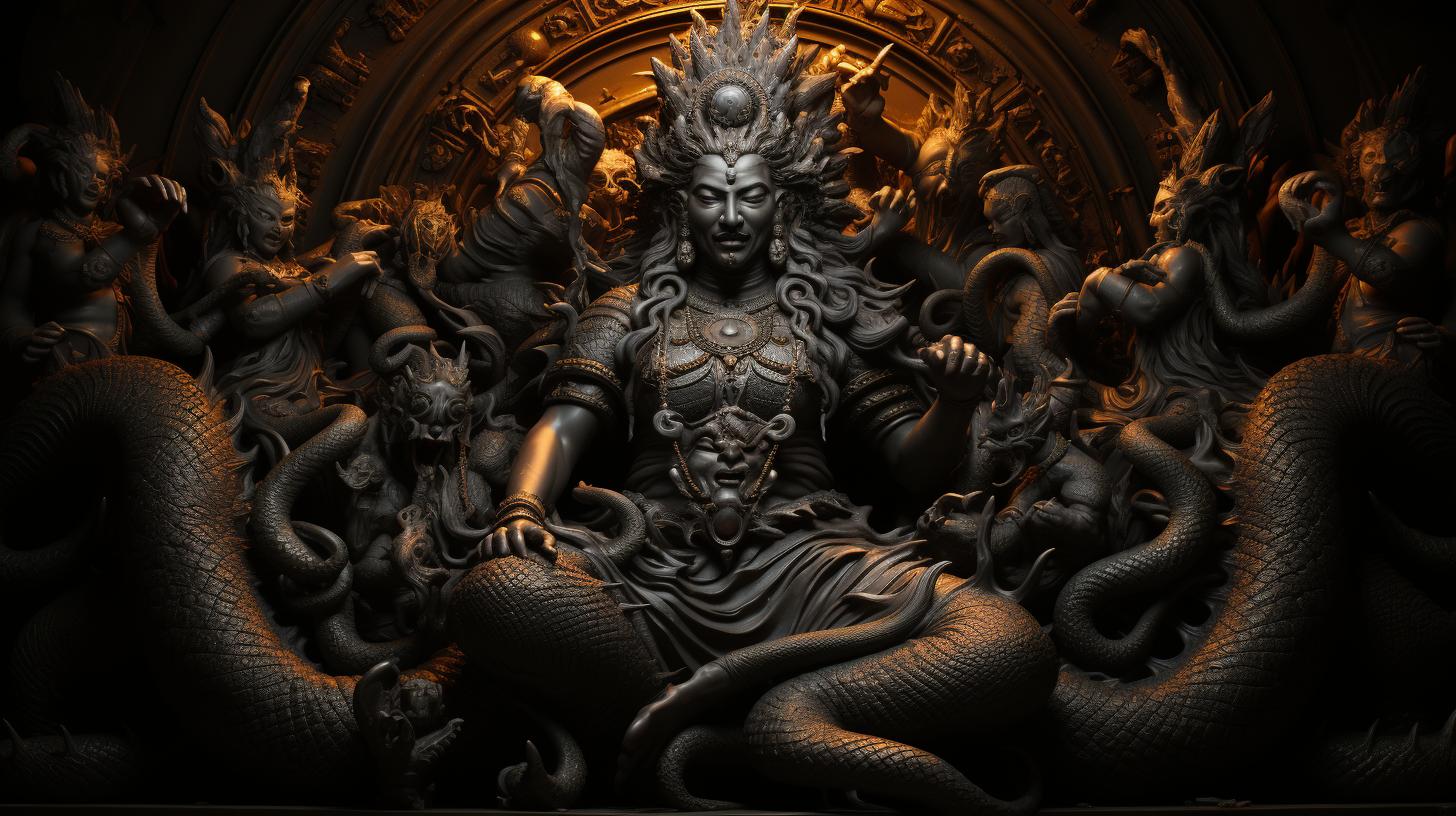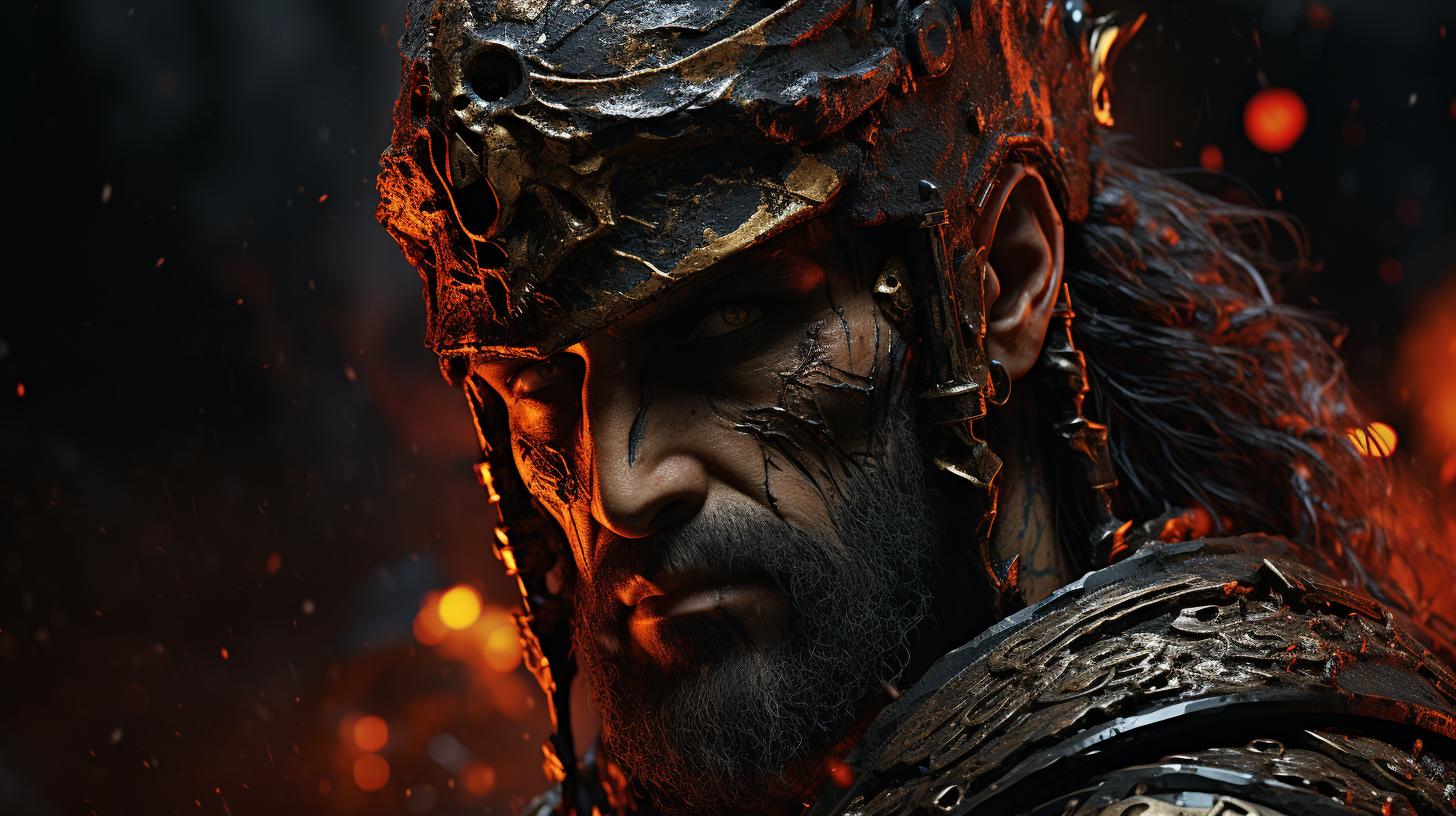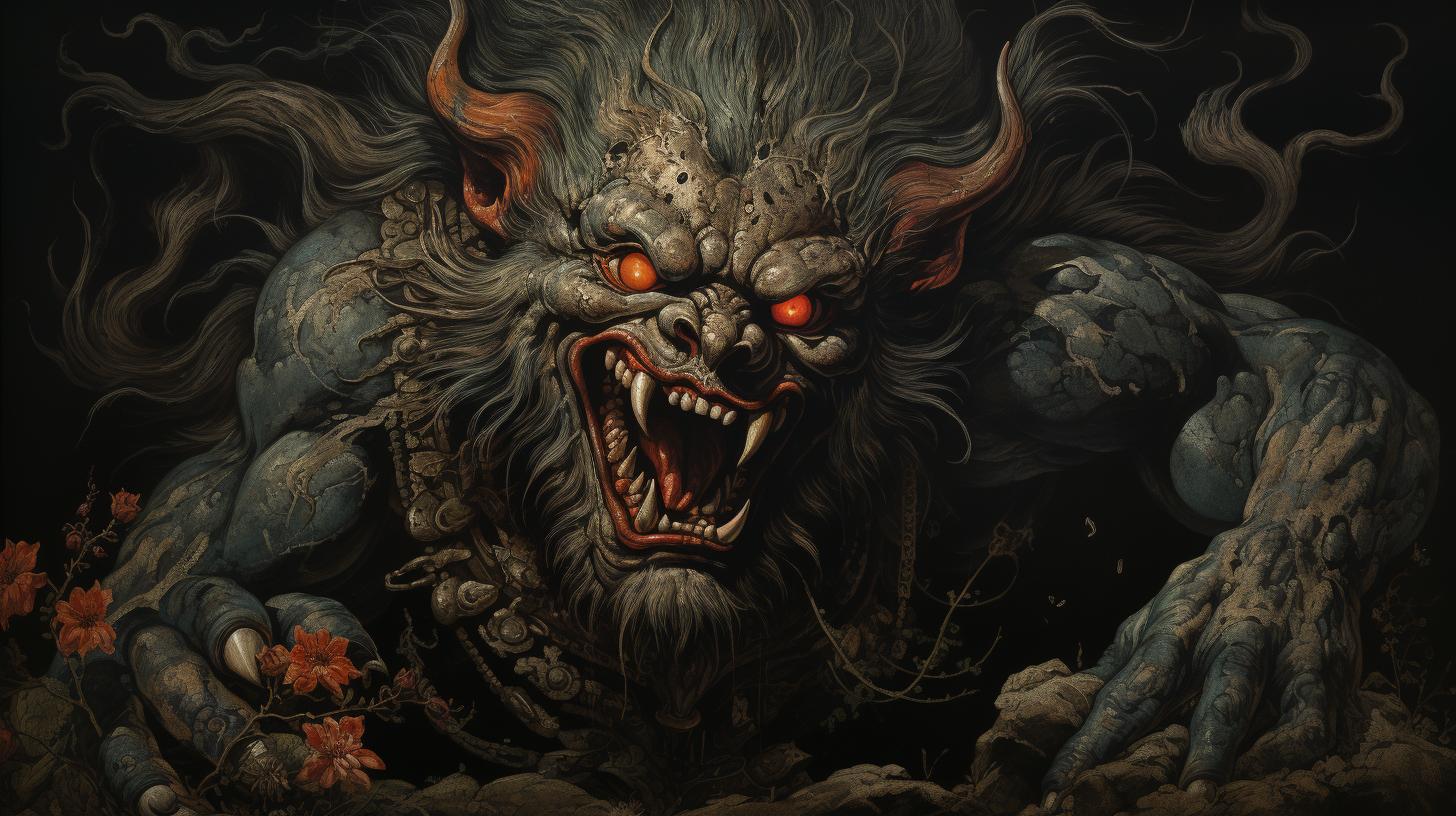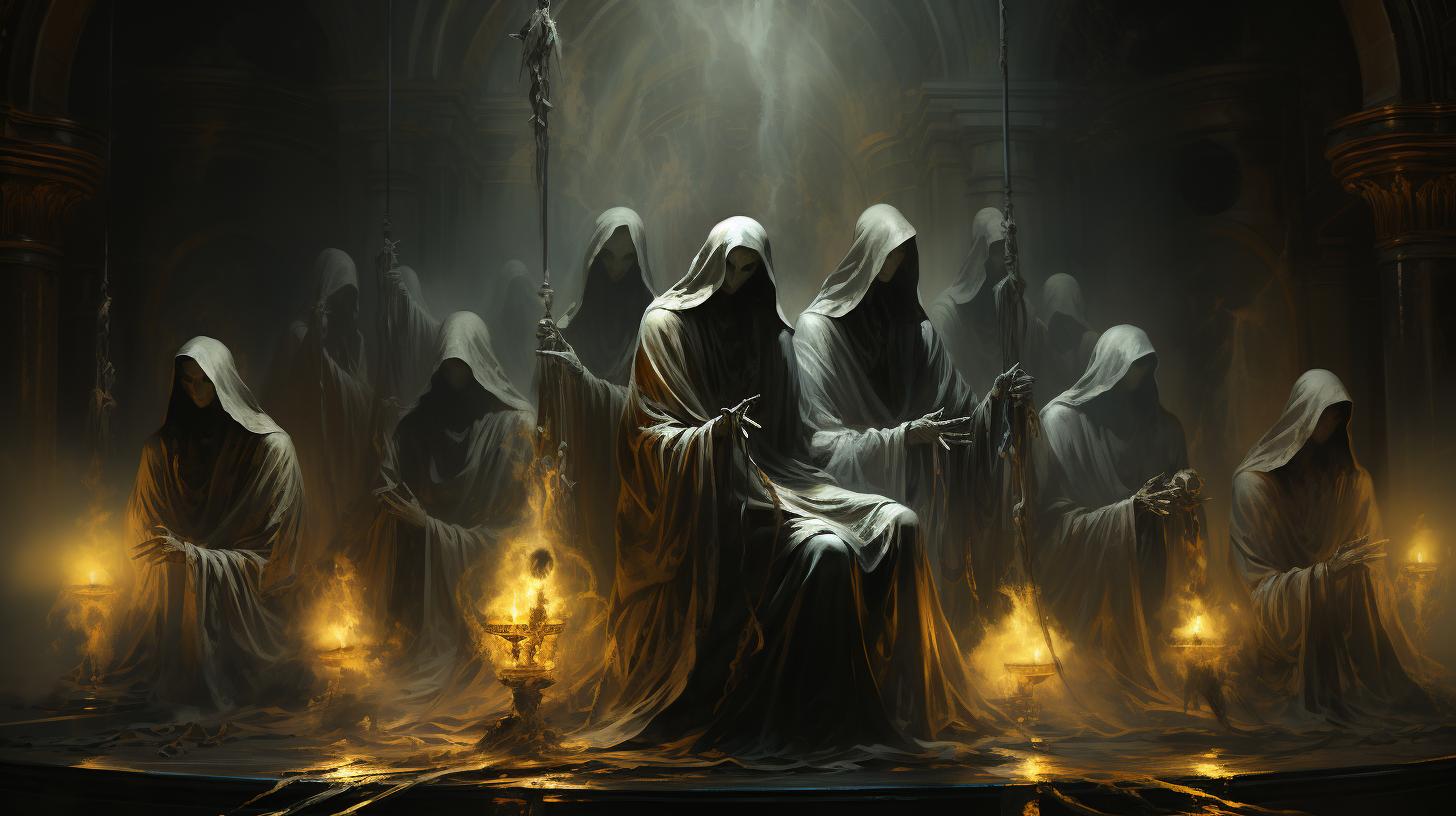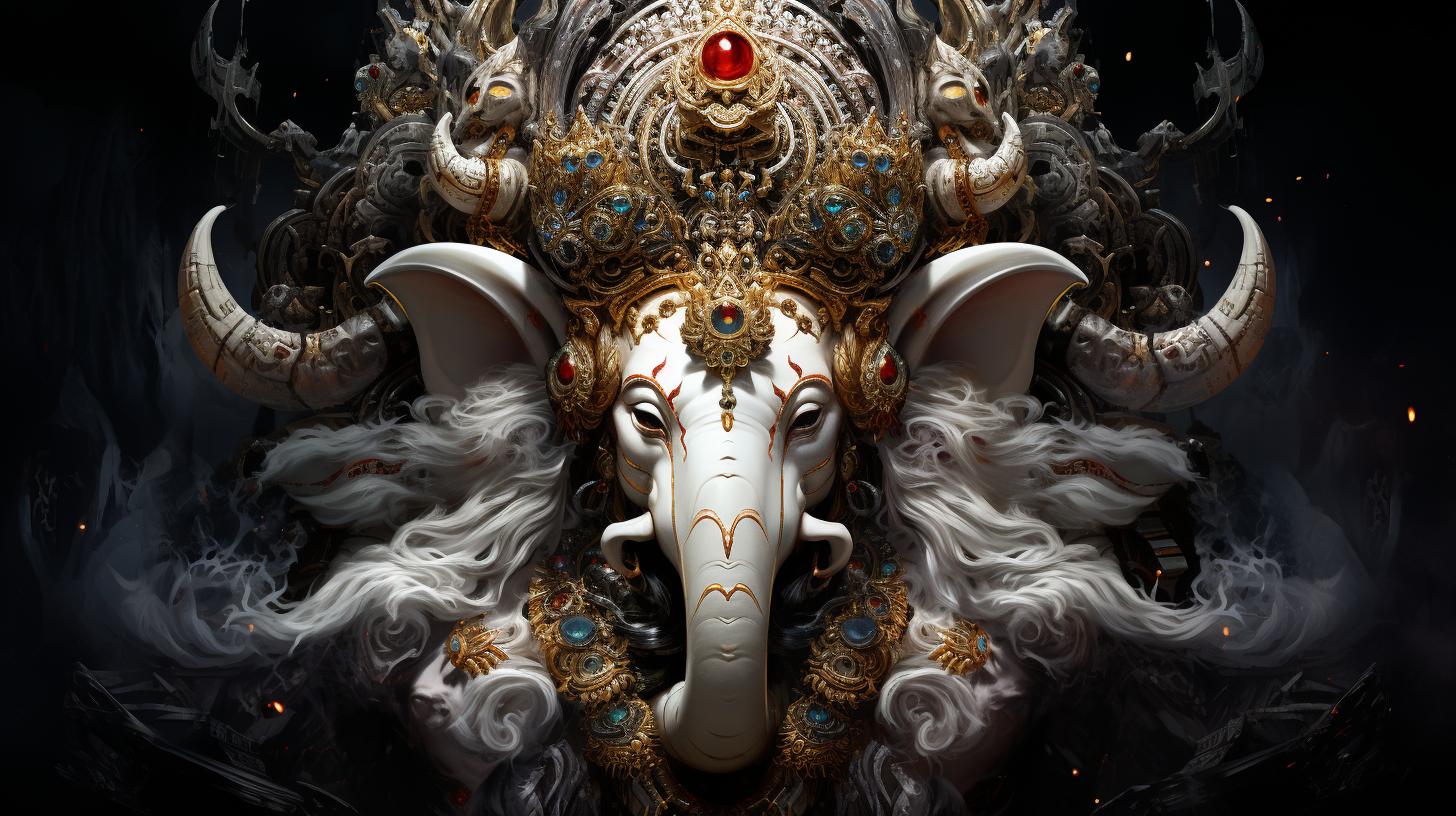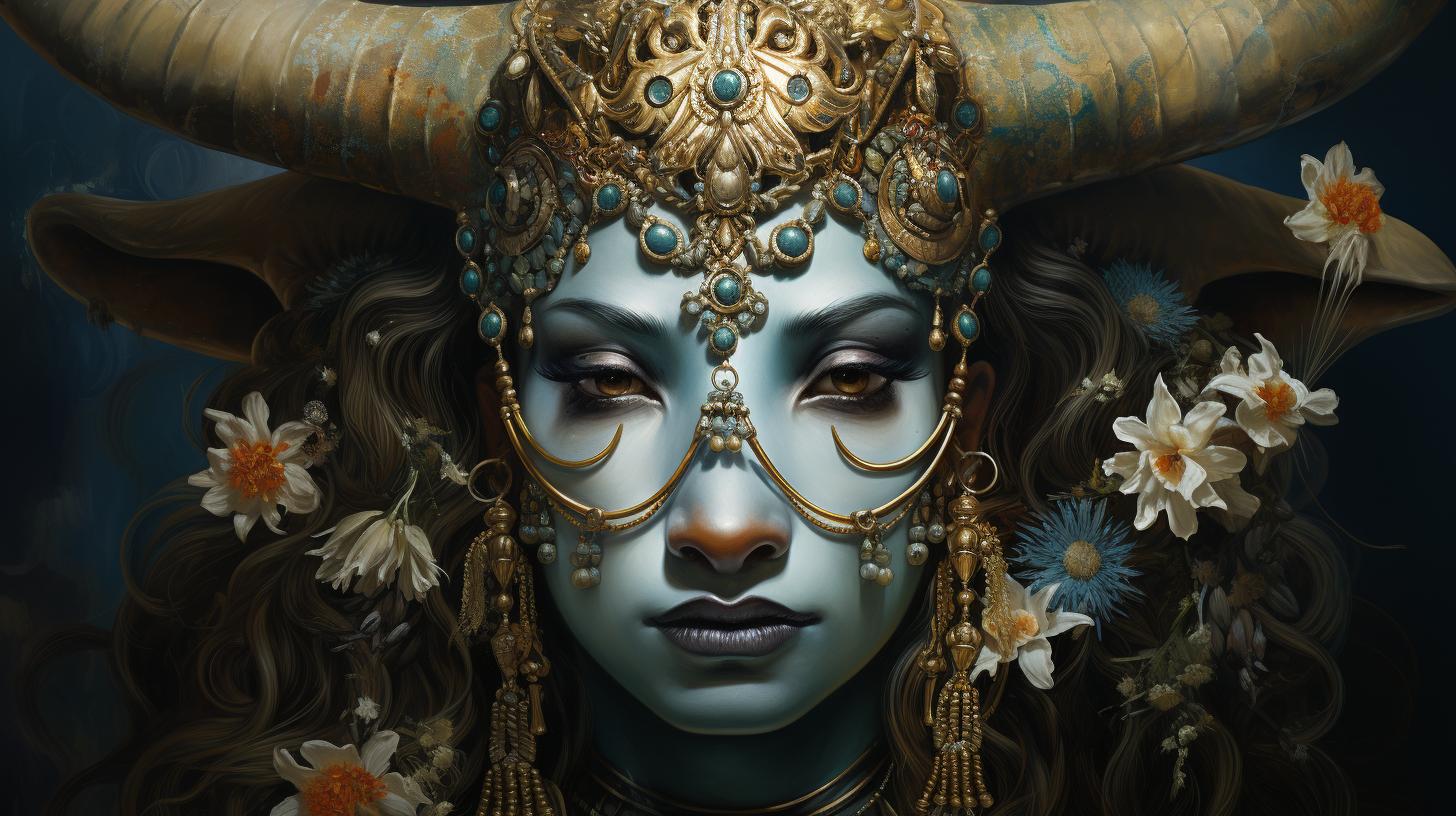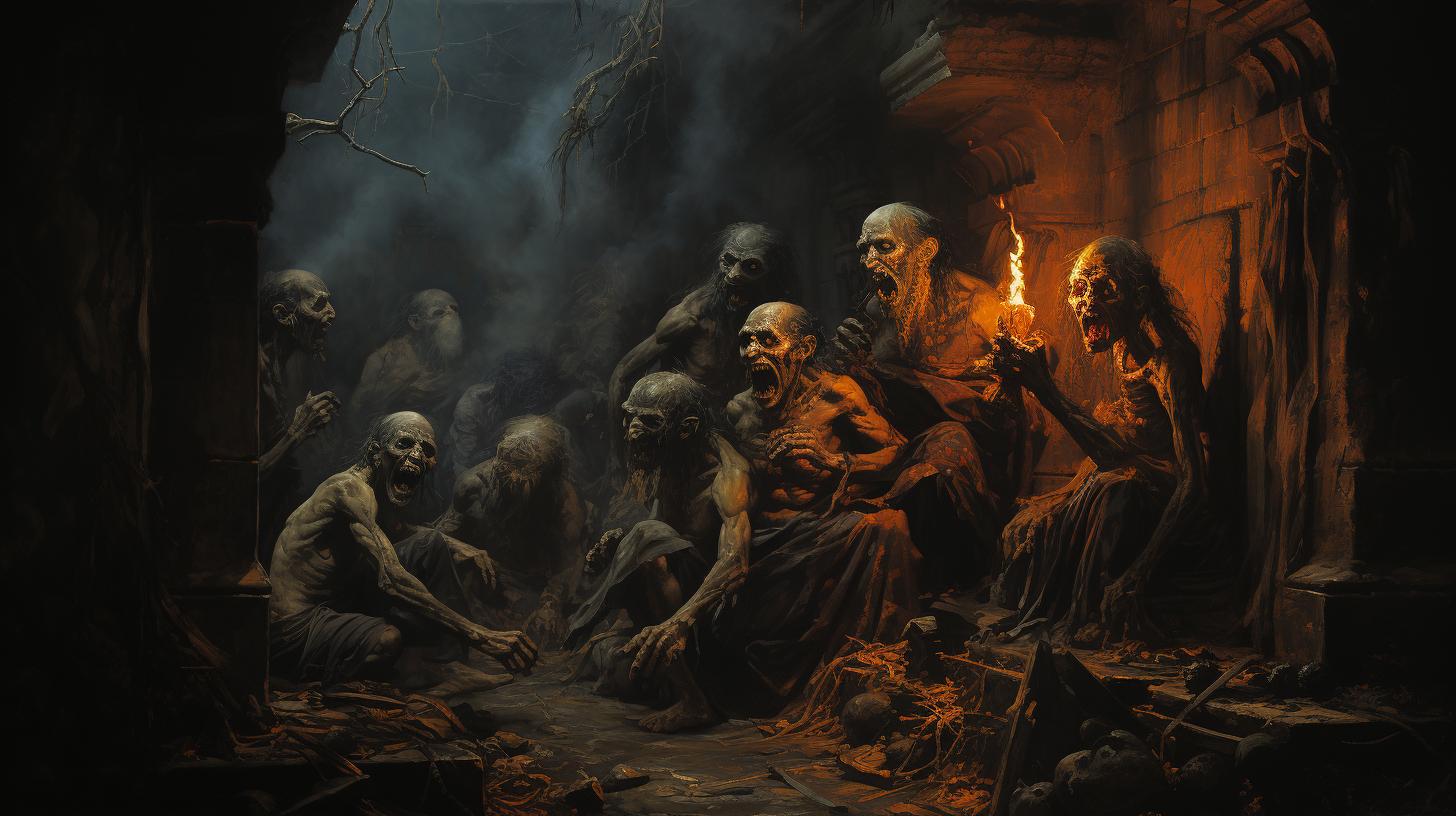Indian Mythological Creatures: Unveiling the Enigmatic Beings of Ancient India
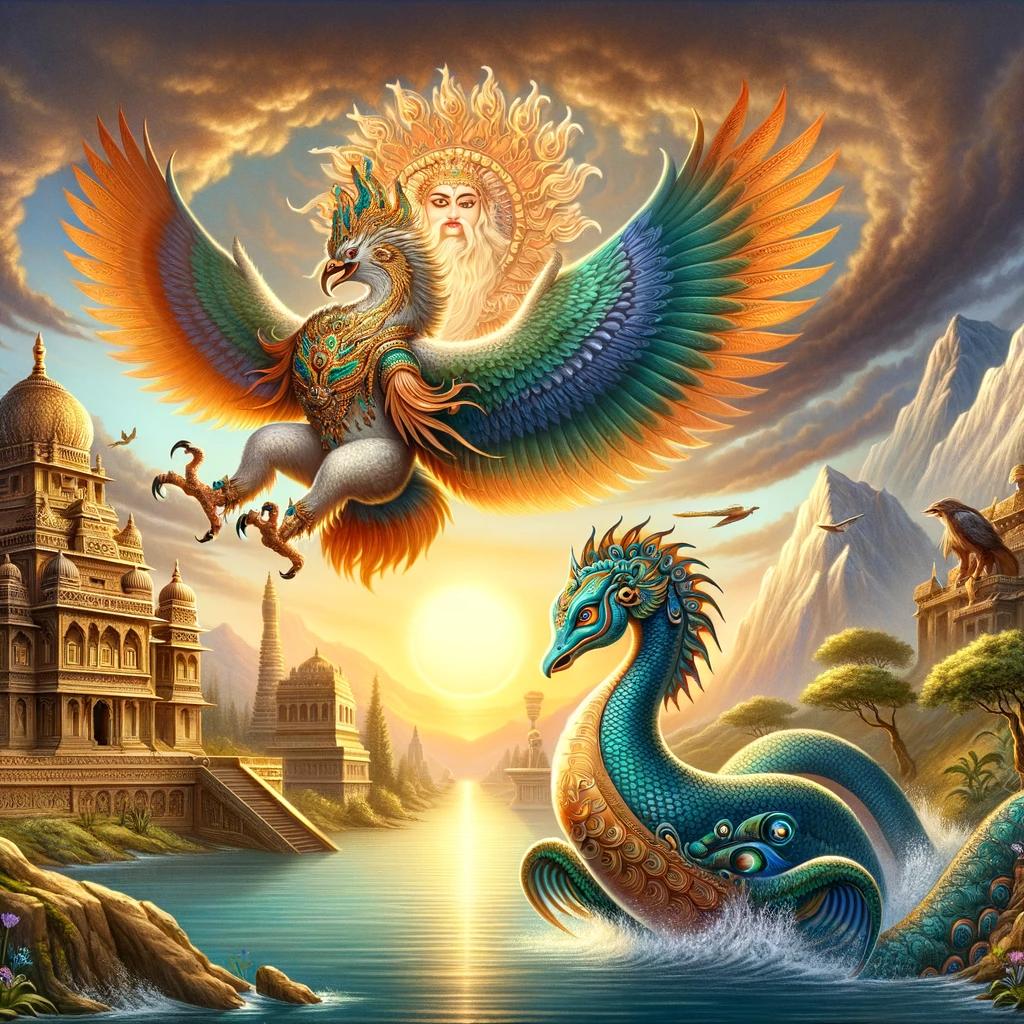
Indian Mythological Creatures have long intrigued and fascinated us with their diverse affiliations and classifications. From mystical beings like Navagunjara, which combines features from nine different animals, to Hindu deities, spirits, and hybrid creatures, the rich tapestry of Indian mythology is filled with awe-inspiring creatures.
The epic tales of Mahabharata also introduce us to mythical entities like Ravana and Hanuman, while terrifying flesh-eating demons and divine mounts of Hindu gods and goddesses further add to the intrigue.
Let’s delve into the captivating world of Indian Mythological Creatures.
Navagunjara: The Enigmatic Creature of Nine Animals
The Navagunjara is a mystical creature that holds a revered place in Indian mythology. This extraordinary being combines the features of nine different animals, creating a truly enigmatic and captivating entity.
According to ancient Hindu scriptures, the Navagunjara possesses the head of a rooster, the neck of a peacock, the waist of a lion, the hump of a bull, the tail of a serpent, the body of a goat, the legs of an elephant, and the wings of a bird.
This astounding combination makes the Navagunjara a sight to behold, defying traditional categorization and captivating the imagination.
The Navagunjara is often associated with Lord Krishna, one of the most revered deities in Hinduism.
According to legends, it appeared before the Pandavas, the main protagonists of the great Indian epic, the Mahabharata, during their exile. Its divine presence left them awe-struck and filled with wonder.
This mythical creature holds deep symbolic significance. The amalgamation of various animal forms in the Navagunjara represents the interconnectedness and harmony of all life forms in the universe. It serves as a reminder of the diverse and interwoven nature of existence, teaching valuable lessons about the unity of all beings.
The Navagunjara offers a unique perspective on the diverse creatures found within Indian mythology. Its mystique and symbolism continue to captivate the imagination of those who delve into the rich tapestry of Indian folklore and legends.
Hindu Mythology Creatures: Gods, Goddesses, and Spirits
Hindu mythology is replete with a vast array of captivating creatures that encompass gods, goddesses, and supernatural beings. These mythological beings hold immense significance in Hindu religious beliefs and are revered for their divine powers and roles in various Hindu scriptures and epics.
Hindu Gods: Vishnu, Shiva, Indra, and More
The pantheon of Hindu gods comprises a multitude of deities, each with their unique attributes and responsibilities. Vishnu, the preserver of the universe, is known for his ten incarnations, including Lord Rama and Lord Krishna. Shiva, the destroyer and transformer, is revered as the supreme ascetic and the lord of cosmic dance.
Indra, the king of gods, governs the heavens and wields the thunderbolt.
Other prominent Hindu gods include Brahma, the creator of the universe; Ganesha, the elephant-headed deity of wisdom and prosperity; and Surya, the sun god.
These divine beings play integral roles in Hindu mythology, displaying extraordinary powers and influencing mortal lives.
Hindu Goddesses: Devi, Lakshmi, Saraswati, and More
Hindu mythology also celebrates a rich pantheon of goddesses who embody different aspects of femininity, power, and divinity. Devi, the divine mother goddess, represents the feminine energy that permeates all creation.
Lakshmi, the goddess of wealth and prosperity, brings fortune and abundance to her devotees. Saraswati, the goddess of learning and arts, bestows creativity and knowledge.
Other revered goddesses include Parvati, the consort of Shiva, who embodies love, fertility, and devotion; Durga, the warrior goddess who vanquishes evil forces; and Kali, the fearsome goddess of time and death.
These goddesses wield immense power and inspire devotion among their devotees.
Spirits and Supernatural Beings: Apsara, Rakshasa, Pishacha, and More
Alongside the gods and goddesses, Hindu mythology is replete with spirits and supernatural beings that inhabit various realms. Apsaras, celestial nymphs, enchant through their exquisite beauty and grace. Rakshasas, demonic creatures, embody malevolence and often act as antagonists in mythological tales.
Pishachas, malevolent spirits, haunt graveyards and devour the flesh of the deceased.
Add to this pantheon of supernatural beings: Nagas, serpent-like deities associated with water; Gandharvas, celestial musicians and actors; and Yakshas, nature spirits and guardians.
These spirits and supernatural beings add depth and complexity to the tapestry of Hindu mythology.
Native American Mythology: Mythical Creatures in Indigenous Beliefs
Native American mythology is a rich tapestry of folklore and legends that are deeply connected to the natural world. Within these traditions, there are numerous mythical creatures that hold significance and play important roles in indigenous beliefs.
- Sasquatch: Also known as Bigfoot, the Sasquatch is a legendary creature often mentioned in Native American legends. It is believed to be a large, hairy humanoid that inhabits forests and wilderness areas.
- Thunderbird: The Thunderbird is a powerful creature depicted as a giant bird with thunderous wings.
It is associated with thunderstorms, lightning, and brings transformative energy to the natural world.
- Skinwalker: In Native American folklore, the Skinwalker is a shape-shifting creature with the ability to transform into different animals.
It is feared for its malevolent intentions and is often associated with witchcraft and dark magic.
- Pukwudgie: Pukwudgies are small, mischievous creatures often found in the mythology of tribes in the northeastern United States.
They are known for their ability to disappear and cause mischief, sometimes even leading to harmful acts.
- Water Panther: The Water Panther, or Mishipeshu, is a creature found in the mythology of the Ojibwe people.
It is a water spirit often depicted as a combination of a cougar or lynx and a serpent. It is associated with water bodies and is believed to bring both blessings and dangers.
These mythical creatures from Native American mythology are just a glimpse into the diverse and fascinating world of indigenous beliefs.
Each creature carries its own symbolic meaning and contributes to the intricate tapestry of stories and legends passed down through generations.
The Mahabharata and Legendary Creatures
The Mahabharata, an ancient Indian epic, is a treasure trove of mythical entities and fantastical creatures. This epic narrative is teeming with awe-inspiring tales and fables that continue to captivate readers and shape the Indian mythological landscape.
Epic Tales: Ravana, Hanuman, and Other Mythical Entities
One of the most iconic characters in the Mahabharata is Ravana, the formidable antagonist who is often depicted with multiple heads and ten powerful arms. Ravana is well-known for his abduction of Sita, the wife of Lord Rama, setting in motion a series of events that form the central storyline of the epic Ramayana.
Another legendary figure from the Mahabharata is Hanuman, the loyal and powerful monkey deity. Hanuman played a pivotal role in Lord Rama’s quest to rescue Sita and is revered for his unwavering devotion and incredible feats of strength.
Creatures in the Epic: Lions, Elephants, Birds, and More
The Mahabharata showcases a diverse array of creatures that add an element of wonder to the epic. Lions, known for their regal presence and symbolism of power, are featured prominently in the narrative, often embodying strength and valor.
Elephants, with their majestic stature and association with royalty, are another significant presence in the Mahabharata. These grand creatures serve as divine mounts for various gods and heroes, adding a touch of magnificence to the epic.
Birds also make appearances in the Mahabharata, with species like Garuda, the celestial bird and vehicle of Lord Vishnu, and Jatayu, a loyal and noble bird who tried to rescue Sita, leaving an indelible mark on the readers.
This section of the Mahabharata regales us with an assortment of mythical beings, each contributing to the depth and grandeur of this ancient Indian epic.
- Ravana, the formidable antagonist with multiple heads and arms
- Hanuman, the loyal and powerful monkey deity
- Lions, symbolizing strength and valor
- Elephants, majestic creatures associated with royalty
- Birds like Garuda and Jatayu, leaving a lasting impression
Hindu Mythical Hybrid Beings: Part Human, Part Animal
The realm of Hindu mythology is populated with a mesmerizing array of hybrid creatures that embody the fusion of human and animal traits.
These beings, often depicted in ancient scriptures and folklore, capture the imagination with their unique characteristics and symbolism. Let’s explore two fascinating aspects of Hindu mythical hybrid beings: Centaurs and Therianthropos, and the depictions of these extraordinary creatures in temples and artwork.
Centaurs and Therianthropos: Mythical Creatures with Human and Animal Traits
Hindu mythology embraces the concept of Centaurs and Therianthropos, mythical creatures that possess a combination of human and animal attributes. Centaurs, reminiscent of the Greek mythology, feature upper bodies of humans and lower bodies of horses.
These beings symbolize the blending of intellect, strength, and divine connection.
Therianthropos, on the other hand, represent creatures with the ability to shapeshift between human and animal forms. They are often revered as divine intermediaries and hold significant roles in ancient tales.
These hybrid beings exemplify the connection between mankind and the natural world, bringing together the physical prowess of animals and the intellectual capacity of humans.
Mythical Creatures Depicted in Temples and Artwork
Temples and artwork in India showcase a stunning array of sculptures, paintings, and carvings depicting the mesmerizing Hindu mythical hybrid beings.
These artistic representations serve as visual narratives of rich mythological tales and cultural beliefs.
From intricate sculptures adorning temple walls to vibrant paintings depicting epic scenes, these depictions capture the essence of Hindu mythology.
The mythical hybrid beings are often portrayed in divine poses, exemplifying their elevated status and otherworldly presence. These artistic creations not only convey the beauty and creativity of ancient Indian art but also serve as a medium to connect people with the rich tapestry of mythical creatures in Hindu culture.
Flesh-Eating Demons and Other Terrifying Creatures
Within the realm of Hindu mythology, the tales of flesh-eating demons and other terrifying creatures form a captivating facet. These formidable beings instill fear and awe in equal measure with their menacing presence and insatiable appetites.
Let us delve into the two subcategories that encompass these creatures: the flesh-eating demons known as Rakshasas and Asuras, and a host of other hair-raising entities like Vetalas and Pretas.
Flesh-Eating Demons: Rakshasas and Asuras in Hindu Mythology
The flesh-eating demons, also known as Rakshasas, are powerful and malevolent creatures that occupy a prominent place in Hindu mythology. Known for their insatiable hunger and shapeshifting abilities, Rakshasas strike fear into the hearts of mortals.
These demonic beings often challenge the gods themselves and feature prominently in epic tales like the Ramayana and the Mahabharata. Furthermore, the Asuras, another group of powerful adversaries, are often equated with the Rakshasas due to their destructive nature and monstrous forms.
Other Terrifying Creatures: Vetalas, Pretas, and More
- Vetalas: Also known as “Vetala,” these fearsome creatures are often depicted as reanimated corpses with supernatural powers. They dwell in cremation grounds and are associated with death and the occult.
- Pretas: In Hindu mythology, Pretas are restless spirits of the deceased who suffer from intense hunger and thirst.
These tormented beings are often depicted as gaunt and emaciated figures desperately seeking food and drink to alleviate their eternal suffering.
- Other Terrifying Creatures: Hindu mythology encompasses a wide range of terrifying entities, including Bhutas (supernatural beings that haunt and possess bodies), Pishachas (flesh-eating demons associated with darkness), and more.
These creatures add depth and darkness to the vast tapestry of Indian folklore.
As we navigate the vast world of Indian mythological creatures, the encounters with flesh-eating demons and other terrifying beings leave an indelible mark on our imagination.
Their existence serves as a reminder of the eternal battle between good and evil, a struggle that has captivated humanity across civilizations and epochs.
The Vahanas: Divine Mounts of Hindu Gods and Goddesses
The Vahanas, or divine mounts, play a significant role in Hindu mythology as they serve as companions and vehicles for various gods and goddesses.
These revered beings are often depicted with their respective Vahanas, symbolizing their power and association with specific animals. Let’s explore two prominent Vahanas in Hindu mythology.
The Elephant Vahana: Airavata and Other Divine Beasts
One of the most iconic Vahanas is Airavata, the celestial elephant who serves as the mount of Lord Indra, the king of the Devas.
Airavata is believed to have emerged during the cosmic churning of the ocean, possessing white, four-tusked magnificence. This majestic creature symbolizes strength, wisdom, and royalty.
Besides Airavata, other divine beasts act as Vahanas for different deities.
Lord Brahma, the creator of the universe, rides upon Hamsa, a mythical swan that represents purity and knowledge. Another remarkable Vahana is Garuda, an enormous bird and the mount of Lord Vishnu, the preserver of the universe.
Garuda embodies power, speed, and loyalty.
The Peacock, Lion, and Other Animal Vahanas
In addition to elephants and birds, Hindu mythology depicts various animals serving as Vahanas for gods and goddesses. The beloved peacock, the national bird of India, is associated with Lord Murugan, the god of war and victory.
The graceful dance of the peacock’s feathers reflects beauty and elegance.
Lion, known for its strength and courage, is the Vahana of Goddess Durga, representing her ferocious and righteous nature.
Another notable divine mount is Nandi, the sacred bull and the Vahana of Lord Shiva. Nandi symbolizes fertility, power, and loyalty.
These Vahanas serve as more than mere vehicles; they embody the divine qualities and characteristics of the gods and goddesses they accompany.
Through their representation, Hindu mythology establishes a profound connection between the deities and the natural world.
.











